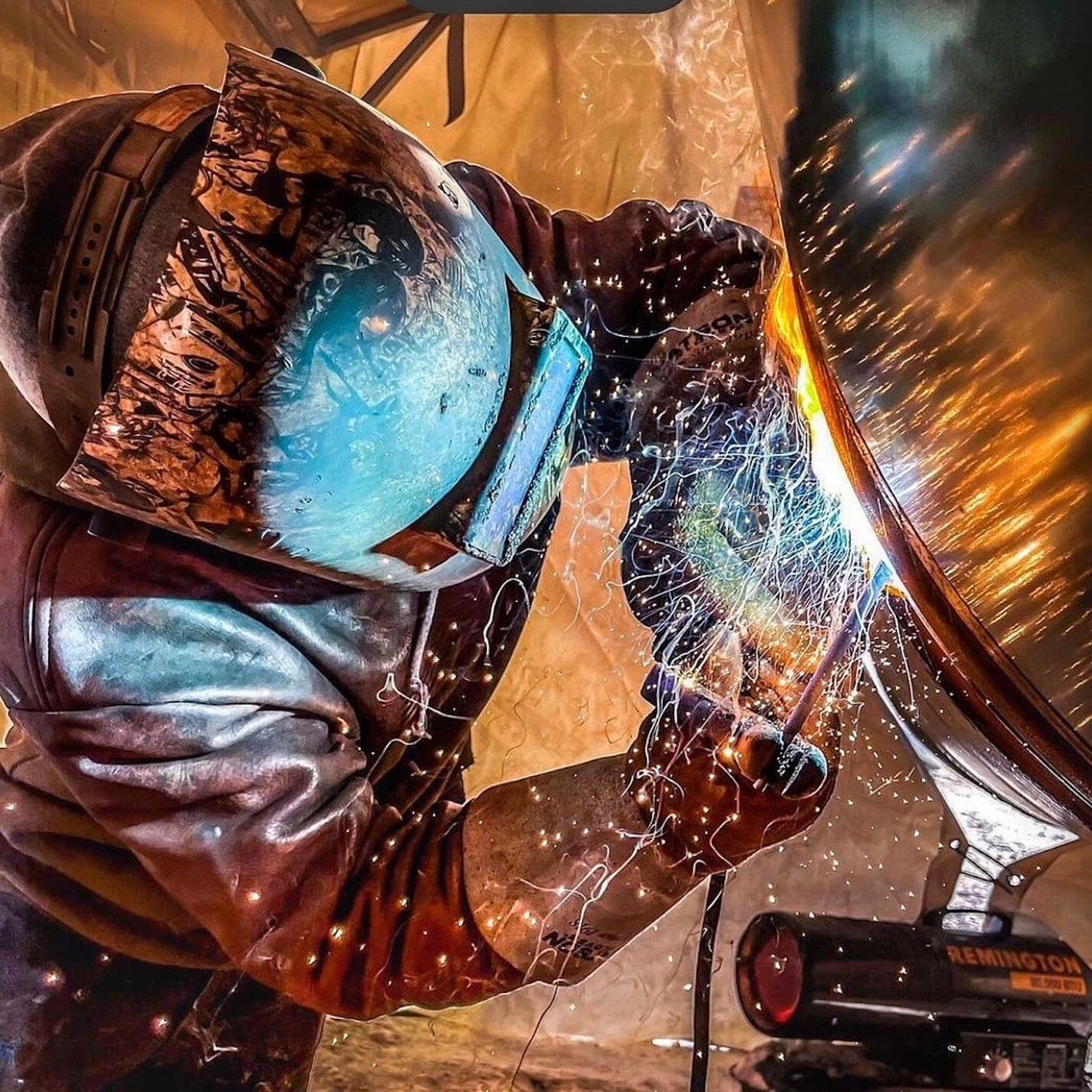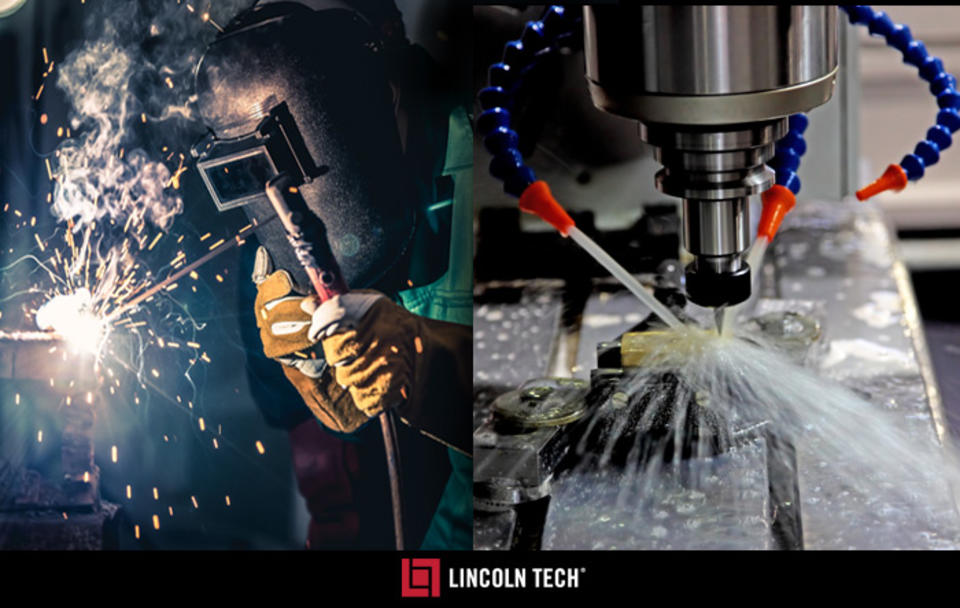Everything about Welding: Key Insights Into Techniques and Ideal Practices for Success
Welding incorporates a range of techniques, each suited for certain products and applications. Understanding these approaches, such as GMAW, SMAW, and TIG, is essential for accomplishing perfect results. Moreover, the appropriate tools and safety and security methods can not be overlooked. As preparation and repairing play essential duties in the welding process, understanding these components can substantially enhance the quality of the last product. What are the crucial aspects that assure a successful weld?
Understanding Various Welding Strategies
Welding methods include a selection of techniques, each matched to particular applications and products. Among one of the most typical techniques are Gas Steel Arc Welding (GMAW), Shielded Metal Arc Welding (SMAW), and Tungsten Inert Gas Welding (TIG) GMAW, additionally referred to as MIG welding, is preferred for its speed and convenience, making it suitable for thin materials. SMAW, or stick welding, is preferred for its simplicity and efficiency in outside environments, specifically with thicker metals. TIG welding supplies accuracy and control, making it ideal for elaborate job and non-ferrous metals (Welding). Each method has its one-of-a-kind advantages and considerations, permitting welders to pick the very best approach based on the task's requirements, material type, and wanted outcomes. Comprehending these strategies is necessary for effective welding
Important Welding Devices and Devices
While different welding techniques need details abilities, the right devices and tools are similarly necessary for achieving top quality outcomes. Vital welding devices consists of welding equipments, which vary depending upon the method-- such as MIG, TIG, or stick welding. Protective gear, including safety helmets, handwear covers, and aprons, guarantees security and comfort throughout the procedure. In addition, components and clamps help secure materials in position, ensuring precision in welds. Consumables like welding poles, cord, and shielding gas are likewise crucial elements that influence the quality of the weld. Tools such as cutters and grinders promote surface prep work and post-weld completing, contributing to a specialist result. Purchasing high-quality tools eventually enhances the efficiency and efficiency of welding tasks.
Security Practices in Welding
Proper security methods are vital in the welding market to safeguard workers from potential threats. Welders have to use appropriate personal safety devices (PPE), including helmets with appropriate shading, gloves, and flame-resistant apparel. Ample air flow is essential to decrease direct exposure to damaging fumes and gases created during the welding procedure. Additionally, employees must be learnt the proper handling of welding devices to stop mishaps. Fire precaution, such as maintaining combustible products far from the welding area and having fire extinguishers easily offered, are necessary. Regular inspections of devices and workspaces can help recognize potential dangers prior to they lead to accidents. By adhering to these safety techniques, welders can create a much safer working setting and minimize dangers related to their profession.
Readying Materials for Welding
Preparing products for welding is an essential step that greatly influences the quality and stability of the end product (Montana Mobile Welding and Repair Fabrication). Appropriate prep work entails cleaning the surfaces to remove contaminants such as rust, oil, and dust, which can compromise the weld. Techniques such as grinding, sanding, or using solvents are typically utilized to attain a clean surface. In addition, ensuring that the materials mesh snugly is vital; voids can cause weak welds. It's likewise essential to take into consideration the alignment and positioning of the components, as this will certainly impact the simplicity of welding and the final outcome. Choosing the ideal filler product and guaranteeing compatibility with the base steels is crucial for attaining strong, sturdy welds.
Tips for Getting High-Quality Welds
Attaining top notch welds requires attention to information and adherence to best methods throughout the welding procedure. Correct joint preparation is necessary, making sure surface areas are tidy and complimentary from impurities. Picking the appropriate filler material and welding method based upon the base steels is vital for ideal bonding. Preserving consistent travel speed and angle while welding can avoid issues and advertise uniformity. In addition, controlling heat input is crucial; extreme warmth can cause warping and damaged joints. Consistently inspecting the welds during the procedure enables for prompt modifications if required. Finally, employing suitable post-weld treatments, such as cleansing and stress relief, can enhance the sturdiness and honesty of the weld, inevitably guaranteeing a successful result.
Fixing Common Welding Issues
Welding typically offers difficulties that can influence the high quality and integrity of the end product. Usual problems such as porosity, irregular weld beads, and getting too hot can occur, each calling welding transformer for certain repairing techniques. Recognizing these troubles is vital for welders to enhance their skills and accomplish excellent outcomes.
Porosity Troubles Described
Although porosity can frequently be ignored, it continues to be a crucial concern in welding that can jeopardize the stability of a finished item. Porosity describes the presence of tiny gas pockets within the weld bead, which can weaken the joint and lead to early failure. This issue usually arises look what i found from pollutants, dampness, or improper protecting gas insurance coverage during the welding procedure. To reduce porosity, welders must confirm that the base products are tidy and dry, utilize appropriate protecting gases, and keep consistent welding parameters. Frequently evaluating the tools and setting can also aid determine prospective concerns before they show up in the weld. Dealing with porosity successfully is essential for accomplishing solid, long lasting welds that satisfy quality requirements.

Inconsistent Weld Beans
Irregular weld beads can substantially influence the high quality and toughness of a finished product. Different variables add to this concern, consisting of inappropriate travel speed, inaccurate amperage setups, and irregular electrode angles. When the welder moves too swiftly, a bead might appear slim and do not have infiltration, while relocating too gradually can cause excessive accumulation. In addition, using the incorrect amperage can cause either damaging or too much spatter, both of which compromise weld integrity. The welder's technique, such as inconsistent torch movement, can additionally bring about uneven bead appearance. To mitigate these troubles, welders ought to concentrate on preserving stable, regulated movements and guaranteeing appropriate equipment setups to attain uniformity in their welds. Uniformity is key to achieving reliable and welding thin metal solid welds.
Getting Too Hot and Bending Issues
Too much warmth throughout the welding procedure can bring about substantial overheating and deforming concerns, impacting the structural stability of the work surface. These issues usually show up as distortion, which can jeopardize positioning and fit-up, making further assembly challenging. Variables adding to overheating consist of the selection of welding parameters, such as voltage and travel rate, along with the sort of material being bonded. To alleviate these problems, welders should maintain constant travel speed and ideal warmth input while keeping an eye on the workpiece temperature level. Additionally, pre-heating or post-weld warmth therapy can help alleviate tensions created by rapid air conditioning - Welding. Normal inspection and adherence to ideal techniques are important in stopping overheating and guaranteeing the longevity and reliability of bonded frameworks
Regularly Asked Concerns
What Are the Job Opportunities in the Welding Sector?
The welding market supplies diverse job opportunities, including placements as welders, assessors, educators, and engineers. Specialists can work in production, building, aerospace, and vehicle industries, taking advantage of solid need and affordable incomes in different duties.
Exactly How Can I Enhance My Welding Speed Without Sacrificing Quality?
To boost welding speed without giving up top quality, one need to practice effective strategies, maintain equipment, enhance settings, and boost hand-eye sychronisation. Routine training and looking for feedback can additionally significantly add to attaining faster, premium welds.
What Qualifications Are Available for Welders?
Various qualifications exist for welders, including those from the American Welding Culture (AWS), the National Center for Building And Construction Education And Learning and Research Study (NCCER), and various industry-specific organizations. These qualifications boost employability and demonstrate skill efficiency.
How Does Welding Impact the Properties of Metals?
Welding affects the homes of steels by changing their microstructure, which can result in changes in strength, ductility, and hardness. Heat input and cooling rates throughout the process considerably impact these material features.
Can I Bonded Dissimilar Metals With Each Other?
